
X/Twitter removes key information about links because Elon Musk thinks it looks better
Elon Musk has stopped X, formerly Twitter, from showing information about links posted to the site. Until the last day, when someone posted a link on X, it showed as an image and the article’s headline, allowing people to see what they would be reading when they clicked. Now, however, that description has been removed. Instead, the article shows up as a normal picture, with the name of the website showing up small in the corner to show that it is a link. The update prompted confusion from many readers, who said that it was unclear whether a post included a link and what that might be a link to. Many news organisations publicly complained that it had forced them to change their strategy for posting on the site, given they could previously depend on Twitter to show the headline of posts. Many tweets that had included links and were posted before the change instantly became incomprehensible, since they had been written to respond to the headline that had pulled through from the article. Mr Musk has said that he ordered the change to improve the site. When the update was first rumoured, in a Forbes report in August, he responded by saying that it was “coming from me directly” and that it will “greatly improve the esthetics”. But it may also be an attempt to encourage users to stay on the site for longer, rather than clicking away to links. Since Mr Musk took over Twitter around a year ago, he has often focused on increasing the amount of time that users spend in its feed. “Our algorithm tries to optimize time spent on X, so links don’t get as much attention, because there is less time spent if people click away,” Mr Musk wrote in a recent tweet. “Best thing is to post content in long form on this platform.” It is also one of a range of recent decisions that looks to put Mr Musk in conflict with news sites. Earlier this year, for instance, X appeared to have added a delay when users clicked on some news sites and other rivals such as Instagram and Blue Sky. Users found that pages would not load for five seconds. Read More Musk confirms he is cutting election integrity staff from X/Twitter ahead of 2024 Reddit will start paying people to post X is shutting down feature to send posts to select people after privacy concern
2023-10-05 22:44
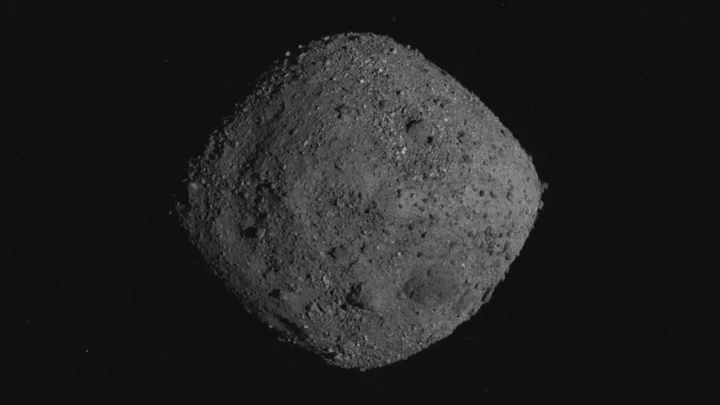
Scientists weren't expecting what they found when they opened up the Bennu asteroid capsule
In late September, scientists at NASA and around the world eagerly awaited the arrival of the OSIRIS-REx capsule containing a sample of the asteroid Bennu. The capsule safely landed on Earth on Sunday 24 September in a Utah desert containing a sample of the asteroid Bennu – categorised as one of the two “most hazardous known asteroids”. When the capsule was first opened, it sparked audible gasps from scientists. Since its arrival, NASA has kept its cards fairly close to its chest but a new blog post from the space agency suggests that progress is going slowly for the “best reason” as there is more sample material than they had anticipated. They explained: “The abundance of material found when the science canister lid was removed earlier this week has meant that the process of disassembling the TAGSAM (Touch-and-Go Sample Acquisition Mechanism) head – which holds the bulk of material from the asteroid – is off to a methodical start.” The OSIRIS-REx’s mission took 7 years to complete, with the sample currently being analysed by NASA taken three years ago before making its way down to Earth. Imagery from the moment the sample was taken confirmed to scientists that there would be asteroid material where they found it, but the quantity of dark particles were far more than they had anticipated. “The very best ‘problem’ to have is that there is so much material, it’s taking longer than we expected to collect it,” said deputy OSIRIS-REx curation lead Christopher Snead of NASA’s Johnson Space Center. “There’s a lot of abundant material outside the TAGSAM head that’s interesting in its own right. It’s really spectacular to have all that material there.” In the coming weeks, experts will continue to work through the particles and begin the complex process of carefully disassembling the TAGSAM to reach the bulk of the Bennu sample inside. Sign up to our free Indy100 weekly newsletter Have your say in our news democracy. Click the upvote icon at the top of the page to help raise this article through the indy100 rankings.
2023-10-05 22:40

Himalayan lake flooding in India kills 18, nearly 100 missing
By Subrata Nag Choudhury and Jatindra Dash NEW DELHI/KOLKATA (Reuters) -At least 18 people were killed and nearly 100 were
2023-10-05 21:29

Lucid launches cheaper Air Pure electric sedan to revive demand
(Reuters) -Luxury electric-vehicle maker Lucid Group on Thursday launched a cheaper, rear-wheel drive version of the Air Pure sedan starting
2023-10-05 21:26
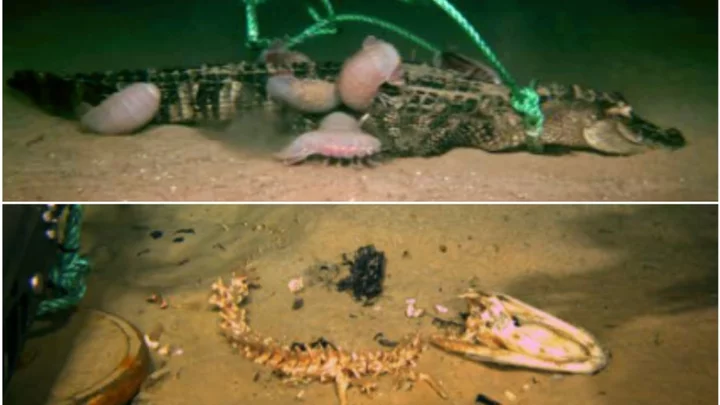
Monstrous 'zombie worms' devour alligator in jaw-dropping experiment
A warning to readers who don’t have a fear of the deep ocean: this story might soon change that. Back in 2019, a group of researchers who wanted to stir excitement down in the murky recesses of the sea conducted a unique experiment. The team, from the Louisiana Universities Marine Consortium (LUMCON), dropped three dead alligators 6,560 feet (2,000 metres) down into the Gulf of Mexico to see how deep-dwelling creatures would react to an uncommon food source. Initially, the scientists thought that the tough hide of the reptiles would put scavengers off, because it would make it hard for them to reach the more desirable soft flesh. However, this swiftly proved to be far from the case. Within a day, nine large isopods (Bathynomus giganteus) were observed feasting on the first carcass, eventually penetrating its hide and eating their meal from the inside out – imagine a crew of foot-long, pink woodlice crawling all over a gator and you get the picture. The second croc, dropped around 100km away, was almost totally devoured in just 51 days – leaving behind nothing more than its skull, spine, and the rope and weight that were used to anchor it to the sea floor. The scant leftovers became a source of great excitement to the researchers when they noticed it had been targeted by a brand new species of bone-eating worm. They concluded that it appeared to be a member of the Osedax family – commonly known as "zombie worms" because they suck away at, and live off, the bones of the dead – which had never been seen around Mexico before. Testing revealed that its nearest identifiable relatives are native to Antarctica and California, therefore making it an “undescribed species”. The investigators wrote in a paper about their discovery, which was published in the journal PLOS, that the creature “will be named in due course”. So, what happened to the third alligator? Well, that part is a mystery, because within eight days of its drop-off at its 1,996-metre-deep observation spot, it had disappeared. The researchers noted that although the body had vanished, the 20.4kg anchor, shackle and rope used to weigh the animal down were found 8.3 metres away – suggesting they had been “dragged” there. The experts concluded that a “large scavenger” had most likely snapped up the reptile. And given the depth at which it had been left, and the “implied body size necessary to both consume a moderately-sized alligator and move a large weight” it was probably a large shark. Clearly, whatever the beast was, it didn’t feel like sharing its dinner with a bunch of greedy worms. Sign up for our free Indy100 weekly newsletter Have your say in our news democracy. Click the upvote icon at the top of the page to help raise this article through the indy100 rankings.
2023-10-05 21:21
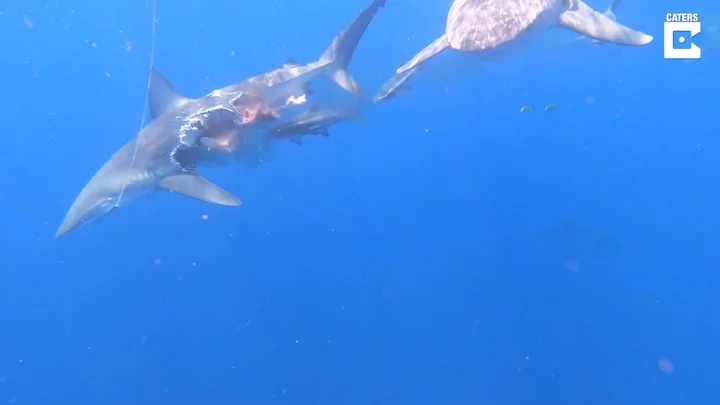
Scientists make creepy discovery about ancient cannibal rituals
A stark new discovery has revealed that cannibalism was a common practice in Europe to commemorate the dead 15,000 years ago. Research from London’s Natural History Museum (NHM) found human remains at a famed Paleolithic site in Cheddar Gorge that appeared to have bite marks across 100 of the bones. Scientists believe this is sufficient evidence of cannibalism in the Magdalenian group. "We interpret the archaeological evidence that cannibalism was practised on multiple occasions across northwest Europe over a short period of time as an indication that such behaviour was part of a funerary behaviour among Magdalenian groups, and not simply practised out of necessity," Dr Silvia Bello, paleoanthropologist and principal researcher said in a statement. Postdoctoral researcher William Marsh went on to say that the study contextualised the area by reviewing all sites "attributed to the Magdalenian culture." "During the terminal time period of the Palaeolithic, you actually see a turnover in both genetic ancestry and funerary behaviour, indicative of population replacement as Epigravettian groups migrated northwards," he said, as per IFL Science. "We believe that the change in funerary behaviour identified here is an example of demic diffusion where essentially one population comes in and replaces another population and that brings about a change in behaviour." Fast forward to 2023, and now people are having their bodies frozen in hopes they can "wake up" in the future. Cryonics "is the practice of preserving humans and animals at cryogenic temperatures in the hope that future science can restore them to a healthy living condition as well as rejuvenate them," according to the National Library of Medicine. "At present cryonics can only be performed after pronouncement of legal death of the cryonics subject." Sign up for our free Indy100 weekly newsletter Have your say in our news democracy. Click the upvote icon at the top of the page to help raise this article through the indy100 rankings.
2023-10-05 20:57

New York Forecast to Get More Snow This Winter: Weather Watch
The snow drought could be over for New York and the northeastern US this coming winter, according to
2023-10-05 20:39

Where Is Tesla’s EV Competition?
After a decade of being trounced by Tesla Inc., this was supposed to be the year that traditional
2023-10-05 19:00
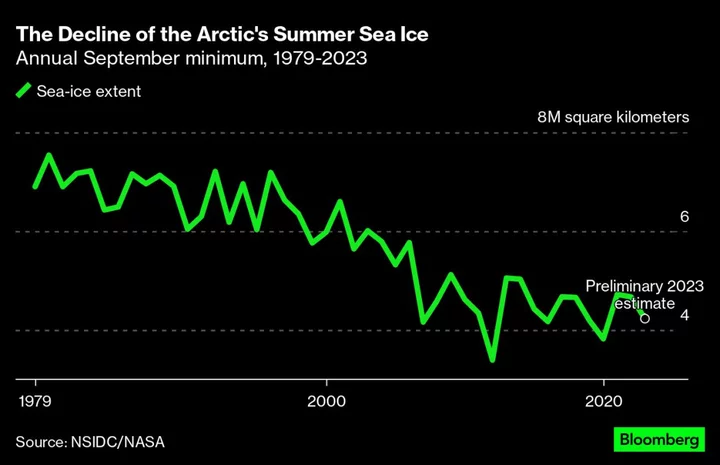
Baby Polar Bears Can’t Get Enough Milk When Sea Ice Disappears
Polar bears may be struggling to nourish their young as melting sea ice forces some populations to fast
2023-10-05 19:00

Chicago Seeks to Nix Rust Belt Label With $1 Billion Climate Bid
Eager to scrap its Rust Belt reputation, a new US Midwest coalition is seeking $1 billion in federal
2023-10-05 19:00
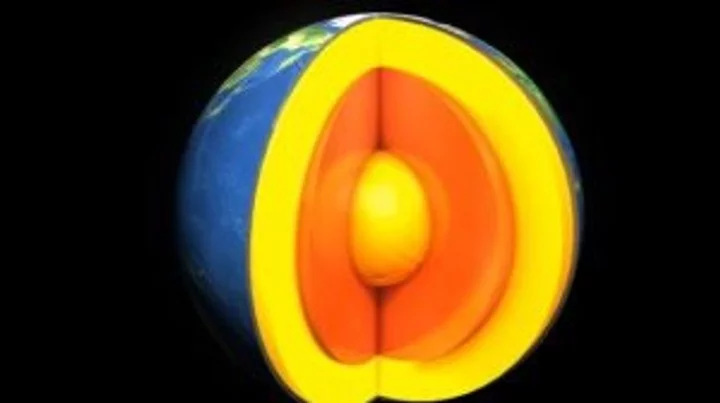
Scientists shed surprising new light on the Earth's 'butter-like' inner core
For centuries we’ve been told that the Moon is made of cheese but now, it turns out, the Earth is more like butter. Or, at least, its inner core is. A new study led by experts at the University of Texas (UT) and collaborators in China found that iron atoms at the very centre of our world move around much more than previously thought, and the implications could be huge. Scientists have long sought to dissect the insides of our planet but it isn’t easy, given that we have no way of directly exploring its core. The deepest hole humans have ever dug – branded the "entrance to hell" – extended an impressive 12,263m (40,230ft) down, but even that doesn’t come close to breaking through the crust to the layers beneath. Still, thanks to techniques like seismic tomography – which analyses how waves of energy travel through different materials during earthquakes – we’ve been able to map out the world’s interior. Now, researchers have used lab experiments and AI algorithms to shed a striking new light on the heart of the planet. "Seismologists have found that the centre of the Earth, called the inner core, is surprisingly soft, kind of like how butter is soft in your kitchen," Youjun Zhang, a Sichuan University professor who co-led the investigation, said in a statement shared with Phys.org. "The big discovery that we've found is that solid iron becomes surprisingly soft deep inside the Earth because its atoms can move much more than we ever imagined. This increased movement makes the inner core less rigid, weaker against shear forces." The findings are significant because they could help explain the role that the inner core plays in generating the world’s magnetic field. They could also help us understand a number of the inner core’s key properties, which have long flummoxed experts. "Now, we know about the fundamental mechanism that will help us with understanding the dynamic processes and evolution of the Earth's inner core," Jung-Fu Lin, one of the study's lead authors, explained. Given that it is impossible for scientists to directly extract specimens from the inner core, Lin and his colleagues recreated it in miniature. They took a small iron plate, shot it with a fast-moving projectile, and collected the resulting temperature, pressure and velocity data, which they then fed into an AI computer model. Using this machine learning system, they were able to scale up the sample iron atoms configuration to mimic the atomic environment within the inner core. At this beefed-up scale, the researchers observed groups of atoms moving about while still maintaining their overall structure. Inner Core iron atom motion model University of Texas This movement could explain why seismic measurements of the inner core reveal an environment that's softer and more malleable than would be expected at such pressures, Prof Zhang explained. Around half of the energy that goes into generating the Earth's magnetic field can be attributed to the inner core, with the rest coming from the outer core, according to the UT team. Thanks to Zhang, Lin and their colleagues, we now have a clearer understanding of the inner core’s machinations at an atomic level, which could help inform how energy and heat are generated at the heart of the planet. This could also shed light on how the inner and outer core work together to generate the Earth’s magnetic field – a key ingredient in making a planet habitable. Sign up for our free Indy100 weekly newsletter Have your say in our news democracy. Click the upvote icon at the top of the page to help raise this article through the indy100 rankings.
2023-10-05 18:55

Facebook’s new AI sticker tool generates ‘completely unhinged’ images
Facebook users have shared images of cartoon characters wielding weapons, naked celebrities, and child soldiers – all created using the app’s new AI-generated sticker feature. Parent company Meta unveiled the new feature last week, allowing Facebook, Instagram, Messenger and Instagram users to generate stickers with artificial intelligence by writing prompts. “I don’t think anyone involved has thought anything through,” 3D artist and illustrator Pier-Olivier Desbiens wrote on X, formerly known as Twitter, who used the tool to create stickers with the prompts ‘Waluigi rifle’, ‘child soldier’, ‘Karl Marx large breasts’ and ‘Trudeau buttocks’. “We really do live in the stupidest future imaginable,” he wrote. Another user shared an AI-generated sticker of conspiracy theorist Alex Jones kissing a dog. “It’s completely unhinged,” they wrote. The Independent has reached out to Meta for comment. The new AI stickers are currently only available to a limited number of English-language users, with Meta yet to confirm whether a wider roll out is planned. “Using technology from Llama 2 and our foundational model for image generation called Emu, our AI tool turns your text prompts into multiple unique, high-quality stickers in seconds,” Meta announced in a blog post last week. “This new feature... provides infinitely more options to convey how you’re feeling at any moment.” Meta claims that billions of stickers are sent by Facebook, Instagram, Messenger and WhatsApp users each month, having first introduced the feature in 2013. Other AI-generated image tools, such as OpenAI’s DALL-E 3, have limits in place to prevent misuse. Users are unable to generate images featuring violent content or real people, though other generative AI platforms exist that do not place limitations on the ways content can be generated. In its blog post announcing the new feature, Meta noted that there was a chance that AI tools could be misused, which is why their introduction is being done on a “step by step” basis. “In keeping with our commitment to responsible AI, we also stress test our products to improve safety performance and regularly collaborate with policymakers, experts in academia and civil society, and others in our industry to advance the responsible use of this technology,” the post stated. “We’ll continue to iterate on and improve these features as the technologies evolve and we see how people use them in their daily lives.” Read More Pixel 8: Google unveils ‘AI-centred’ iPhone rival Facebook and Instagram users face monthly fee for ad-free version Zuckerberg says Metaverse can bring back the dead – virtually Meta just took a step towards its dream of the metaverse
2023-10-05 18:41
You Might Like...

Renogy Kicks Off its Biggest Sales Event of the Year With “Renogy Day” on June 1, 2023

ChatGPT-Wary Universities Scramble to Prepare for New School Year

Reddit just got better for people who aren't logged in

Google to Pay Texas $8 Million to Settle Deceptive Pixel 4 Ad Claim

AVEVA Further Strengthens Executive Leadership Team with Four New Senior Roles

Island Appoints Respected Industry Leader Steve Tchejeyan as President

Jabil Releases Results of Global Survey on Energy Storage Trends

Weird Weather Hits Utility Profits and a Blistering Summer Is Little Help
